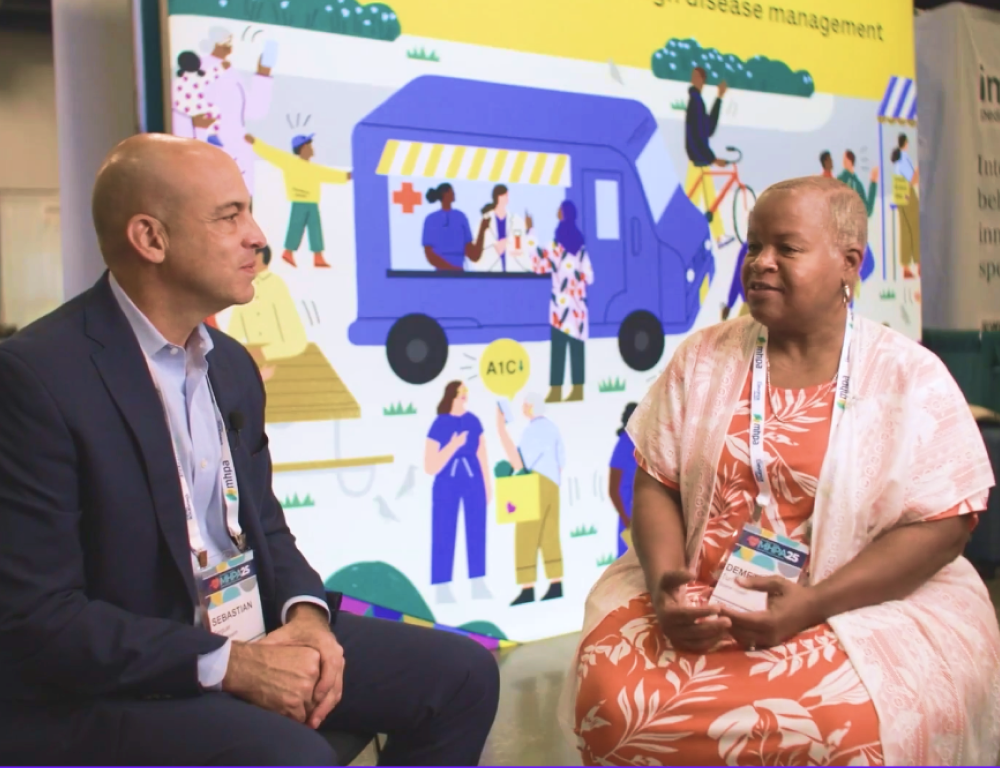Diving into Health Equity at Modern Healthcare’s Social Determinants of Health Symposium

emocha Health is now Scene Health. Learn more about our rebrand at www.scene.health/rebrand
Last week, experts gathered for Modern Healthcare’s Social Determinants of Health Symposium to discuss best practices, programs, and initiatives in advancing health equity. This timely conference underscored the importance of addressing social determinants of health (SDOH) to reduce longstanding disparities in health and health care — a new focus for various regulatory, government, and industry leaders.
Early in the conference, Kaiser Permanente Vice-President of Social Health, Dr. Anand Shah’s words on the concept of this work feeling “intuitive” touched on the idea that many providers do understand that health outcomes are affected by patients’ conditions outside clinical walls. This sentiment was affirmed later by Dr. J. Nwando Olayiwola, Humana’s Chief Health Equity Officer and Senior Vice President, who reflected on her time in clinical care, “I always think about earlier in my career as a primary care physician being at the point of care with a patient and wishing I had more information about the rest of what I did not see.”
Beyond attaining buy-in, multiple experts agreed that the challenge now is understanding how to best systematically identify and address each patient’s needs based on their social context.
To do this, Dr. Garth Graham, Director and Global Head of Healthcare and Public Health at Google/YouTube, highlighted the need for collaboration, “It really does take the proverbial village to move forward with some of these challenges and now is the moment — more than ever before, to really galvanize that village to make a difference.”
One key point of collaboration is technology. But in one session, Kat Esser, a Strategic Planning and Innovation Executive of Non-Profit Healthcare at Amazon Web Services, noted that so much of the data around SDOH focuses on zip codes. She called for healthcare organizations to “open their aperture” by “going beyond the zip code, beyond stereotypes of underserved populations, and even beyond social determinants of health.” Esser emphasized the importance of gathering a wider lens of data that can capture those who might fall through the cracks like those who live on reservations, are LGBTQ+, transient, rural, or have a temporary qualifier like new moms. Esser also mentioned the importance of considering the nuance between SDOH and social drivers of health and understanding that social factors are not fixed but can be changed to help populations get healthier.
In the same conversation, Dr. Angela Shippy, a Senior Physician Executive and Clinical Innovation Lead for Non-Profit Healthcare at Amazon Web Services, spotlighted virtual care technology’s role in addressing SDOH, “If transportation or employment hinders traditional in-person visits, then we want to support those platforms that allow for virtual care or home monitoring,” she explained.
In one of the later sessions, a question was posed on how to stratify and prioritize the different SDOH. Dr. Ana McKee, the Chief Medical Officer and Executive Vice President of the Joint Commission, acknowledged that the answer to that question will depend on each population’s needs and that “Understanding the community is number one. We need to have that voice front and center.”
This sentiment was echoed by Dr. Olayiwola in an earlier conversation, “We make assumptions a lot in health care about what someone may or may not need, but we haven’t done a great job of doing it that way,” she explained. “It’s amazing for me to see what happens when you actually ask people about housing, if they know where their next meal is going to come from, what their situation is on transportation.”
Still, many would say that housing insecurity is one of the more critical SDOH, and one session focused exclusively on addressing housing insecurity. In that session, Kathy Moses, a Senior Fellow at the Center for Health Care Strategies, reiterated that “housing is health care” and highlighted the California Advancing and Innovating Medi-Cal (CalAIM) program as one way to leverage Medicaid to help address complex challenges like homelessness and its adjoining complications.
Echoing this sentiment, the event included a presentation of findings from a new survey from Kaiser Permanente’s Social Needs Network for Evaluation and Translation (SONNET) that underscored the importance of housing security even in insured populations. In a survey of Kaiser Permanente members in southern California with subsidized health insurance, nearly half of people served had one social risk, with housing security being the most common.
Like housing, our ability to tackle large-scale issues is fundamental to working around SDOH and advancing health equity. Karen Fiumara, Vice President of Risk and Safety in the Department of Quality and Safety at Brigham and Women’s Hospital, highlighted an important consideration — the need to face uncomfortable conversations in this work, including those on understanding and addressing institutional and structural racism nationally and within individual health care organizations.
As the event closed, Dr. Mckee left the audience with a hopeful sentiment that we must not let perfection become the enemy of progress, “Look, this is a great experiment. No one knows how to solve this problem 100% of the time effectively,” she said. “But being the great American experiment that it is, it’s an opportunity for a lot of innovation, different ideas, and the sharing of solutions.”




.png)

